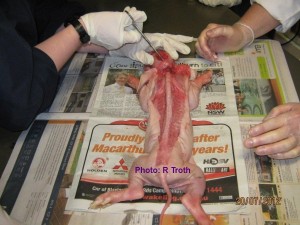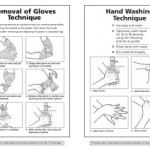Teaching science can be a tough gig. Most of the time teachers feel that they are time poor and content rich. Fitting everything required by the curriculum into a term can feel like herding cats into a bag.
Teachers know that kids want to explore science more than be taught it, but often it’s just not possible to let them take as much time as they need to really get as much learning out of an experiment as they would like.
That’s why I’m over the moon when I hear that a class has had the time to really get more bang for their buck out of one of our specimens. These photos have been sent by a labbie who bought them for a teacher wanting to teach about the brain and spinal cord. We decided that piglets would be the best option to teach this and the kids were enjoying it so much that when they were finished looking at that they flipped them over and got into the abdominal organs as well. Truly a case of learning about everything but the squeal.
The labbie says:
“They are an excellent class. It was great to see how involved they were during the prac. They really enjoyed it!
Because this dissection took place over just one period, I was requested to prepare the piglets prior to the prac, exposing the brain and the spine. … We couldn’t get hold of a Dremmel at the time so, used a hack saw to cut a cross in the skull then, cut the hole out with a pair of kitchen scissors. He also suggested that a Dremmel would be perfect for this job. It’s been put on our list for purchases prior to the budget rollover.
I then prepared the others which made it quicker and easier for the students to then get to where the brain stem and the spinal cord meet since that was their main aim for the prac.
After that the piglets were dissected even further as you saw, to locate and expose all other organs in the stomach cavity etc
All of our Science staff were extremely impressed on the quality the specimens you sent.”






Before we sent the piglets we had a bit of discussion by email about the best course of action for this prac. I still don’t have a Dremel and haven’t had a go at it, but this is what we suggested:
We believe that the best tool for opening the skull will be a small circular saw called a Dremel available at hardware stores. I was speaking to a very experienced biology teacher … that runs an extensive comparative anatomy program in his Yr 12 classes who agrees that they are the tool for the job. I am going to buy one and have a go myself. Do be careful because the skull will be slippery. You will use the Dremel to score the skull and then need a chisel and hammer to ease the skull open. There are some very good videos on YouTube that will show you what to do.
To expose the spinal cord at the back of the neck you will need to cut into the skin on either side of the spine at the base of the skull and lever the section away from the body and towards the tail. You will also be able to view the spinal cord and spinal nerves by opening the abdomen of the piglet and removing the organs to expose the spine. You will be able to see the spinal nerves entering/exiting the spinal cord cavity between the vertebrae – lift them with a probe. The vertebra will be soft enough to slice the top off with a scalpel and you will be able to view the spinal cord in-situ.
This website is an excellent resource for piglet dissections and the skull and spinal cord sections are very clearly described with photos. http://www.whitman.edu/content/virtualpig















